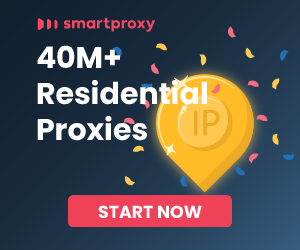ZoomInfo is a business-to-business (B2B) database that provides information on companies and professionals for sales and marketing purposes. Like many other data providers, ZoomInfo takes measures to protect its data from unauthorized scraping, which is the automated extraction of data from a website without permission. While I cannot provide proprietary details specific to ZoomInfo's anti-scraping measures, I can outline common techniques that similar platforms may use to prevent scraping:
Authentication and Authorization: ZoomInfo requires users to log in, which means that scraping attempts must use valid user credentials. This prevents anonymous scraping and allows ZoomInfo to track and limit user activities.
Rate Limiting: By analyzing the frequency of requests from a single user or IP address, ZoomInfo can limit the number of requests allowed over a certain period. If the request rate exceeds a threshold, the user may be temporarily blocked or throttled.
CAPTCHAs: To distinguish between humans and bots, ZoomInfo might use CAPTCHAs, which are challenges that are typically easy for humans but difficult for automated systems to solve.
Dynamic Content: Web pages that dynamically load content using JavaScript can be more challenging for scrapers to interact with, as simple HTTP request-based scraping tools cannot execute JavaScript.
User-Agent Checking: ZoomInfo's servers can analyze the User-Agent string sent by the client to detect patterns that are indicative of scraping tools rather than regular web browsers.
IP Blacklisting: If an IP address is identified as a source of scraping, it can be blacklisted, preventing any further access to ZoomInfo's services from that address.
API Monitoring: If ZoomInfo provides an API, access to the API can be strictly controlled, monitored, and limited to prevent misuse.
Legal Agreements: ZoomInfo's terms of service likely prohibit unauthorized scraping, and they may take legal action against entities that violate these terms.
Behavioral Analysis: By analyzing the behavior of a user, such as the speed of navigation, the pattern of access, and the types of data requested, ZoomInfo can identify and block scraping bots.
Obfuscated HTML and Changing DOM Structure: Changing the website's structure frequently or obfuscating HTML can break scraping scripts that rely on a consistent Document Object Model (DOM).
Encryption and Tokenization: Using encrypted or tokenized data can also prevent scrapers from accessing sensitive information directly, even if they can access the HTML content.
Server-Side Detection Mechanisms: Sophisticated server-side scripts can detect unusual activity patterns that may indicate scraping, such as high-volume data requests, and respond by blocking the scraper.
Content Delivery Network (CDN): Services like Cloudflare can provide additional layers of protection against scraping with features like bot management.
It's important to note that web scraping can be a legal gray area and is explicitly prohibited by many websites' terms of service, including ZoomInfo. Engaging in scraping activities without permission can lead to legal consequences and ethical considerations, such as violating user privacy and potentially overloading servers. Always review the terms of service and privacy policy of a website before attempting to scrape its data, and consider reaching out to the website directly to inquire about legal access to the data you need.
